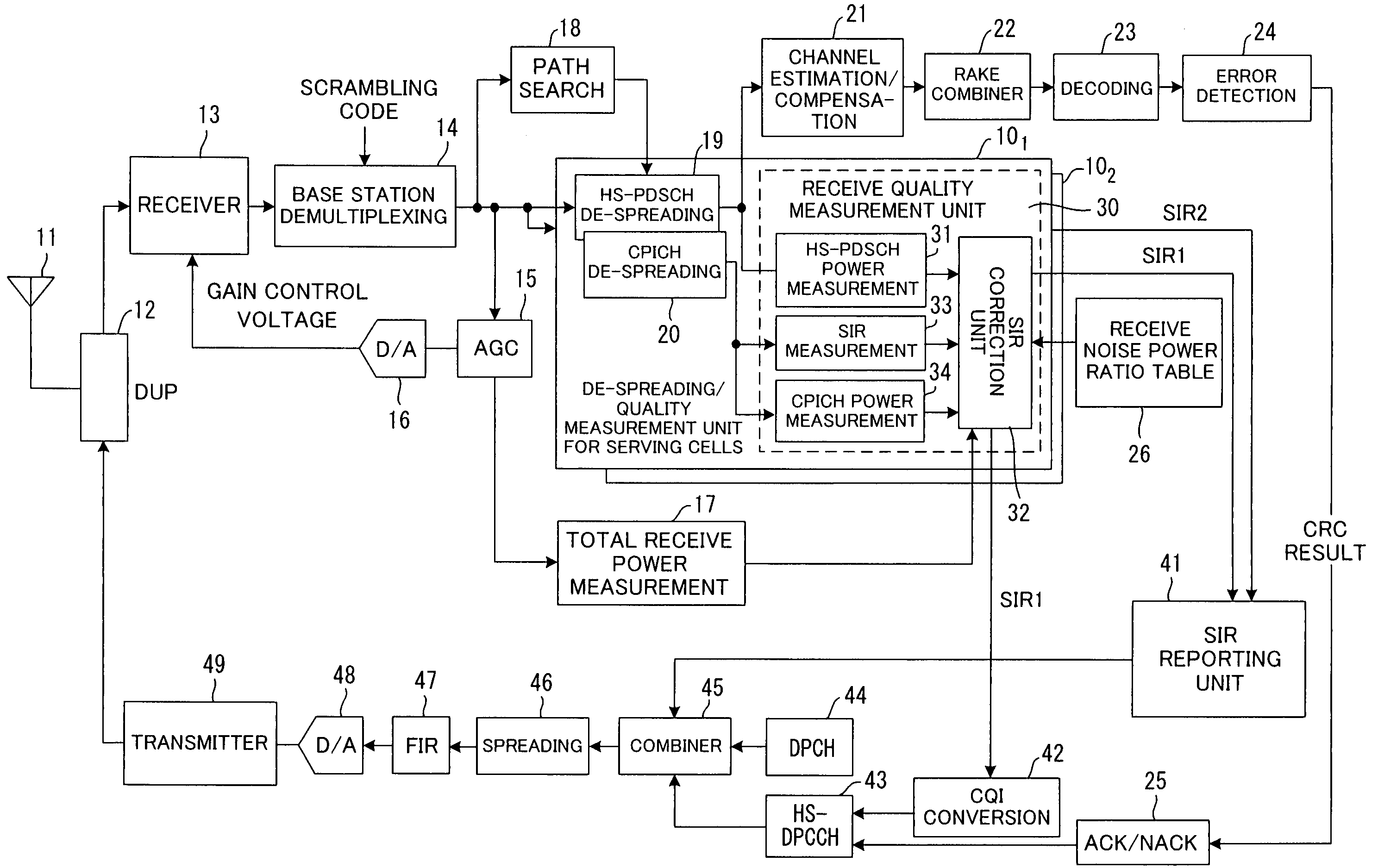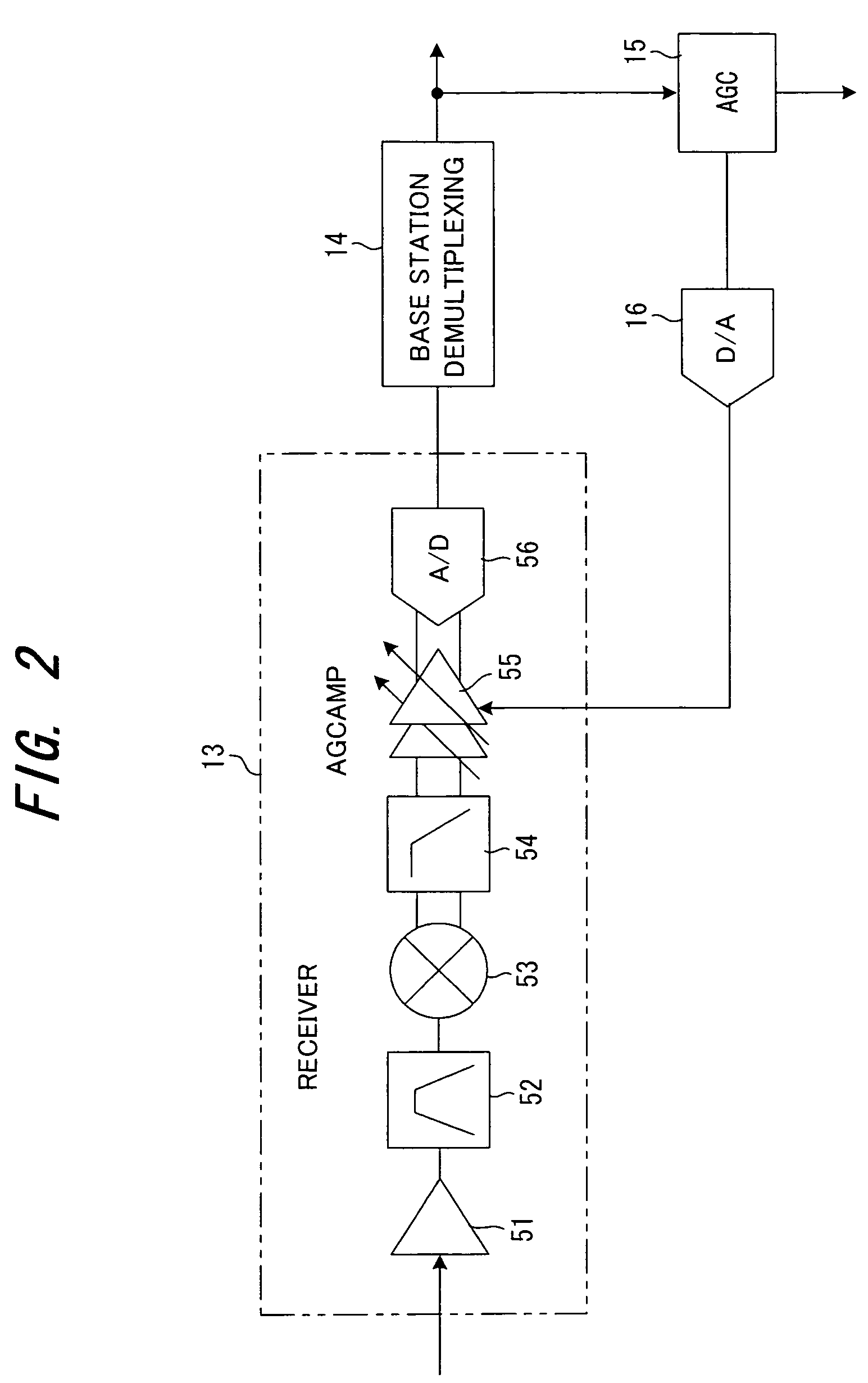Communication environment measurement method for mobile station and the mobile station
a communication environment and measurement method technology, applied in the direction of radio transmission, transmission monitoring, electrical equipment, etc., can solve the problems of easy handover to the other cell, non-serving cell, increased interference, etc., to avoid generation of unnecessary handover, accurate judgment of communication environment quality, and avoidance of unnecessary handover
- Summary
- Abstract
- Description
- Claims
- Application Information
AI Technical Summary
Benefits of technology
Problems solved by technology
Method used
Image
Examples
first embodiment
(A) First Embodiment
[0081]Configuration of Mobile Station
[0082]FIG. 1 is a block diagram depicting the mobile station of the present invention. The signal transmitted from the base station is input to the receiver 13 via the antenna 11 and the duplexer 12. As FIG. 2 shows, the receiver 13 comprises the high frequency amplifier 51, band pass filter 52 for limiting the band, frequency conversion unit 53 for converting RF signals into base band signals in frequency, low pass filter 54 for limiting the high band, gain variable amplifier 55 and AD converter 56 for converting input signals into analog signals.
[0083]The base station demultiplexing unit 14 multiplies the receiver output signal by the scrambling code of the serving cell or the adjacent non-serving cell (de-spreading) when necessary, demultiplexes the signals from a base station of each cell; and outputs them. The AGC control unit 15 determines the gain control value of the gain variable amplifier 55 (FIG. 2), so that the sig...
second embodiment
(B) Second Embodiment
[0105]In the first embodiment, SIR is estimated in a serving cell on assumption that data is not being received via HS-PDSCH, so that SIR can be measured and compared under the identical conditions for a serving cell and non-serving cell. In the second embodiment, SIR is estimated on assumption that data is being received from a non-serving cell via HS-PDSCH, so that SIR can be measured and compared under the identical conditions for a serving cell and non-serving cell.
[0106]FIG. 9 is a block diagram depicting the de-spreading / quality measurement units 101 and 102 of the serving cell and non-serving cell according to the second embodiment, where the elements that are same as the elements in the despreading / quality measurement unit in FIG. 1 are denoted with the same reference numerals. The differences are:
[0107](1) the SIR correction unit 32 is removed from the de-spreading / quality measurement unit 101 of the serving cell, and SIR measured by the SIR measurement...
third embodiment
(3) Third Embodiment
[0116]In the third embodiment, a mobile station demodulates HS-SCCH detects a slot which data is not being transmitted via HS-PDSCH, measures the SIR in the slot, and uses this SIR for handover, thereby the SIR measurement condition for the serving cell can be same as the condition of SIR measurement for the non-serving cell.
[0117]FIG. 12 is a block diagram of the third embodiment depicting the mobile station where elements that are same as the elements of the first embodiment in FIG. 1 are denoted with the same reference numerals. The differences are that an HS-SCCH measurement unit 40 is installed, and that the SIR measurement unit 33 measures the SIR in a slot where data is not being transmitted via HS-PDSCH, and outputs it as SIR1.
[0118]FIG. 13 is a flow chart depicting the handover control of the third embodiment. When the handover status is generated, the mobile station demodulates the data received from the serving cell SCL via HS-SCCH, and identifies a sl...
PUM
 Login to View More
Login to View More Abstract
Description
Claims
Application Information
 Login to View More
Login to View More - R&D
- Intellectual Property
- Life Sciences
- Materials
- Tech Scout
- Unparalleled Data Quality
- Higher Quality Content
- 60% Fewer Hallucinations
Browse by: Latest US Patents, China's latest patents, Technical Efficacy Thesaurus, Application Domain, Technology Topic, Popular Technical Reports.
© 2025 PatSnap. All rights reserved.Legal|Privacy policy|Modern Slavery Act Transparency Statement|Sitemap|About US| Contact US: help@patsnap.com



